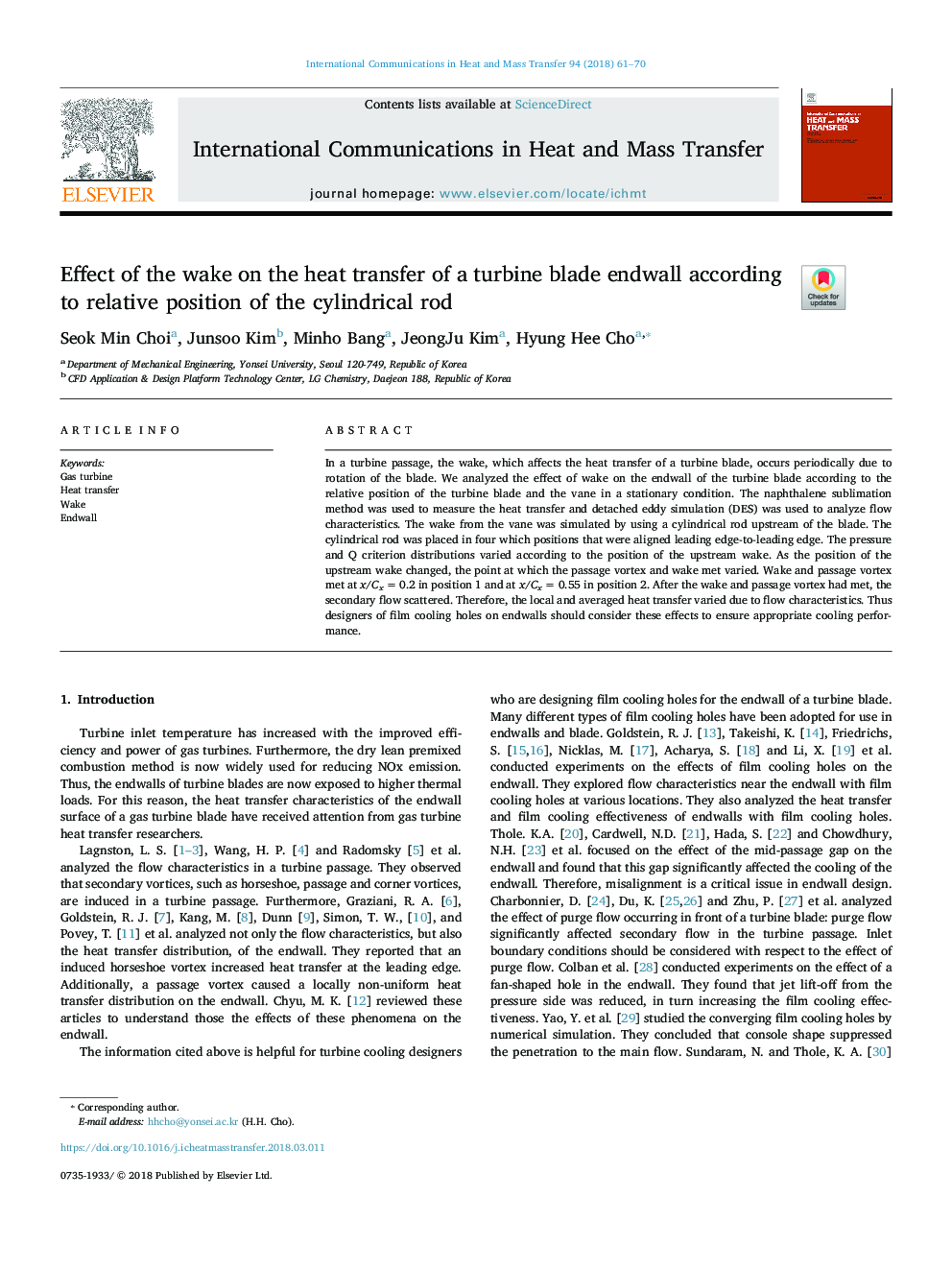| Article ID | Journal | Published Year | Pages | File Type |
|---|---|---|---|---|
| 7052878 | International Communications in Heat and Mass Transfer | 2018 | 10 Pages |
Abstract
In a turbine passage, the wake, which affects the heat transfer of a turbine blade, occurs periodically due to rotation of the blade. We analyzed the effect of wake on the endwall of the turbine blade according to the relative position of the turbine blade and the vane in a stationary condition. The naphthalene sublimation method was used to measure the heat transfer and detached eddy simulation (DES) was used to analyze flow characteristics. The wake from the vane was simulated by using a cylindrical rod upstream of the blade. The cylindrical rod was placed in four which positions that were aligned leading edge-toâleading edge. The pressure and Q criterion distributions varied according to the position of the upstream wake. As the position of the upstream wake changed, the point at which the passage vortex and wake met varied. Wake and passage vortex met at x/Cxâ¯=â¯0.2 in position 1 and at x/Cxâ¯=â¯0.55 in position 2. After the wake and passage vortex had met, the secondary flow scattered. Therefore, the local and averaged heat transfer varied due to flow characteristics. Thus designers of film cooling holes on endwalls should consider these effects to ensure appropriate cooling performance.
Keywords
Related Topics
Physical Sciences and Engineering
Chemical Engineering
Fluid Flow and Transfer Processes
Authors
Seok Min Choi, Junsoo Kim, Minho Bang, JeongJu Kim, Hyung Hee Cho,
